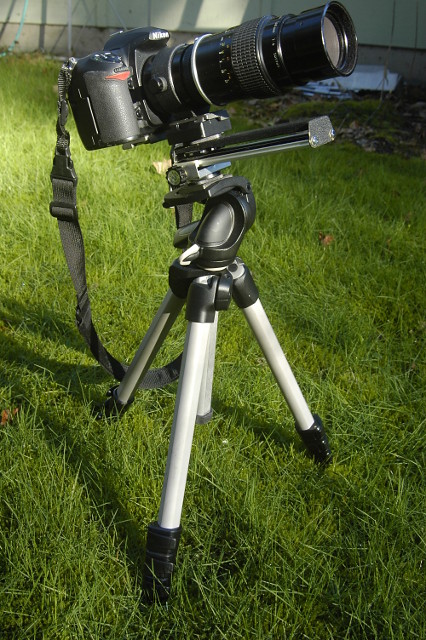Behind the photos: "A tale of three photos: The snow berries of Jenkins Creek Park"

This set up consists of a Nikon D200, Nikon 105mm F4 Macro lens with the dedicated 52.5mm extension tube mounted on a macro focusing rail, all mounted on a Bogen/Manfrotto 390 tripod. Not pictured is an electronic release, that I use to avoid introducing additional motion when releasing the shutter into the camera system which may result in a blurry photo.
This specific lens, and the 55mm lens I have as well, will by itself (without the extension tube) do a 1:2 reproduction ratio, or 1/2 life size. The extension tube allows the 105mm to focus to a 1:1 reproduction ratio, or life size. However, the extension tube "costs" some light for the exposure, however, the built in meter will compensate for that. It also will not allow the lens to focus to infinity, so with the extension tube on, the lens will not focus to normal ranges. It also includes a tripod collar, similar to that found on longer telephotos/telephoto zooms, which allows me to rotate the camera for verticals, rather than using the tripod head's tilt function, so as to avoid repositioning the camera. I prefer the 105mm because it provides a greater working distance so as to avoid disturbing the subject.
The tripod is essential for macro work, because even a slight adjustment in the position of the camera can result in the photo being blurry or out of focus due to the shutter speeds and subject distances involved. It also has the ability to spread the tripod legs further out than most tripods, useful for low angle work. The macro focusing rail allows me to set the reproduction ratio (Life size or 1:1, here) and then move the camera back and forth to adjust the focus, because the reproduction ratio is set by how close the focus distance is set.
Comments
Post a Comment